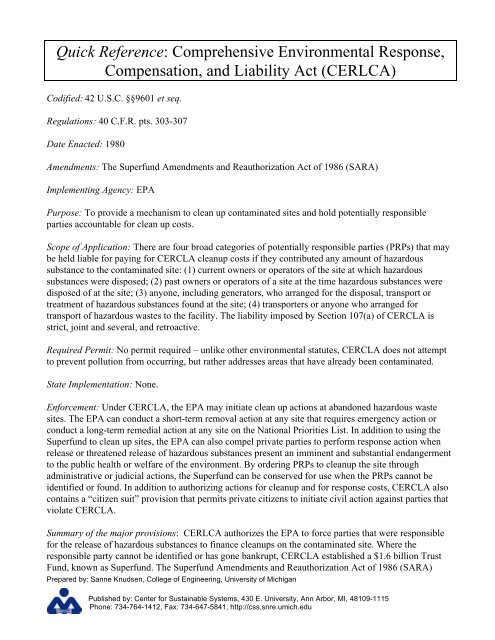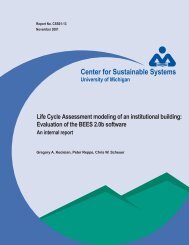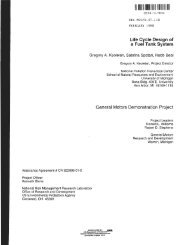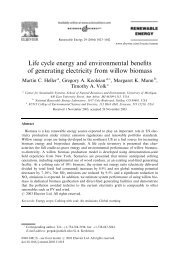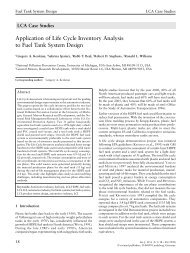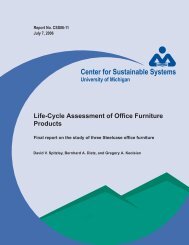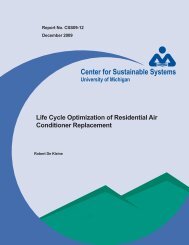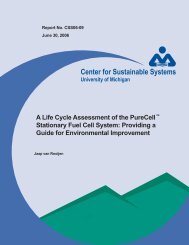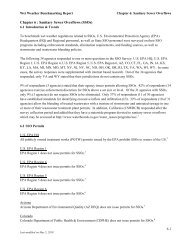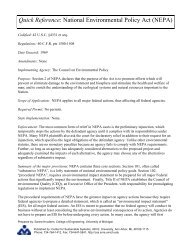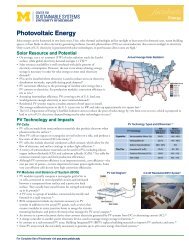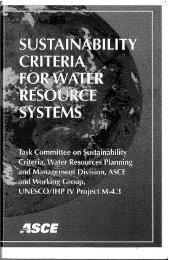Comprehensive Environmental Response, Compensation, and ...
Comprehensive Environmental Response, Compensation, and ...
Comprehensive Environmental Response, Compensation, and ...
Create successful ePaper yourself
Turn your PDF publications into a flip-book with our unique Google optimized e-Paper software.
Quick Reference: <strong>Comprehensive</strong> <strong>Environmental</strong> <strong>Response</strong>,<br />
<strong>Compensation</strong>, <strong>and</strong> Liability Act (CERLCA)<br />
Codified: 42 U.S.C. §§9601 et seq.<br />
Regulations: 40 C.F.R. pts. 303-307<br />
Date Enacted: 1980<br />
Amendments: The Superfund Amendments <strong>and</strong> Reauthorization Act of 1986 (SARA)<br />
Implementing Agency: EPA<br />
Purpose: To provide a mechanism to clean up contaminated sites <strong>and</strong> hold potentially responsible<br />
parties accountable for clean up costs.<br />
Scope of Application: There are four broad categories of potentially responsible parties (PRPs) that may<br />
be held liable for paying for CERCLA cleanup costs if they contributed any amount of hazardous<br />
substance to the contaminated site: (1) current owners or operators of the site at which hazardous<br />
substances were disposed; (2) past owners or operators of a site at the time hazardous substances were<br />
disposed of at the site; (3) anyone, including generators, who arranged for the disposal, transport or<br />
treatment of hazardous substances found at the site; (4) transporters or anyone who arranged for<br />
transport of hazardous wastes to the facility. The liability imposed by Section 107(a) of CERCLA is<br />
strict, joint <strong>and</strong> several, <strong>and</strong> retroactive.<br />
Required Permit: No permit required – unlike other environmental statutes, CERCLA does not attempt<br />
to prevent pollution from occurring, but rather addresses areas that have already been contaminated.<br />
State Implementation: None.<br />
Enforcement: Under CERCLA, the EPA may initiate clean up actions at ab<strong>and</strong>oned hazardous waste<br />
sites. The EPA can conduct a short-term removal action at any site that requires emergency action or<br />
conduct a long-term remedial action at any site on the National Priorities List. In addition to using the<br />
Superfund to clean up sites, the EPA can also compel private parties to perform response action when<br />
release or threatened release of hazardous substances present an imminent <strong>and</strong> substantial endangerment<br />
to the public health or welfare of the environment. By ordering PRPs to cleanup the site through<br />
administrative or judicial actions, the Superfund can be conserved for use when the PRPs cannot be<br />
identified or found. In addition to authorizing actions for cleanup <strong>and</strong> for response costs, CERCLA also<br />
contains a “citizen suit” provision that permits private citizens to initiate civil action against parties that<br />
violate CERCLA.<br />
Summary of the major provisions: CERLCA authorizes the EPA to force parties that were responsible<br />
for the release of hazardous substances to finance cleanups on the contaminated site. Where the<br />
responsible party cannot be identified or has gone bankrupt, CERCLA established a $1.6 billion Trust<br />
Fund, known as Superfund. The Superfund Amendments <strong>and</strong> Reauthorization Act of 1986 (SARA)<br />
Prepared by: Sanne Knudsen, College of Engineering, University of Michigan<br />
Published by: Center for Sustainable Systems, 430 E. University, Ann Arbor, MI, 48109-1115<br />
Phone: 734-764-1412, Fax: 734-647-5841, http://css.snre.umich.edu
appropriate another $8.5 billion. In order to ensure that the Superfund is used to remediate the most<br />
contaminated sites, the EPA can only conduct long term remediation actions at sites that are on the<br />
National Priorities List, which ranks the sites eligible for Superfund clean up. If the EPA compels a<br />
private party to respond to a release or threatened release of a hazardous substance that may endanger the<br />
public health or welfare of the environment, the private party can only recover costs from Superfund<br />
upon proving that it was not a potentially responsible party.<br />
Prepared by: Sanne Knudsen, College of Engineering, University of Michigan<br />
Published by: Center for Sustainable Systems, 430 E. University, Ann Arbor, MI, 48109-1115<br />
Phone: 734-764-1412, Fax: 734-647-5841, http://css.snre.umich.edu


